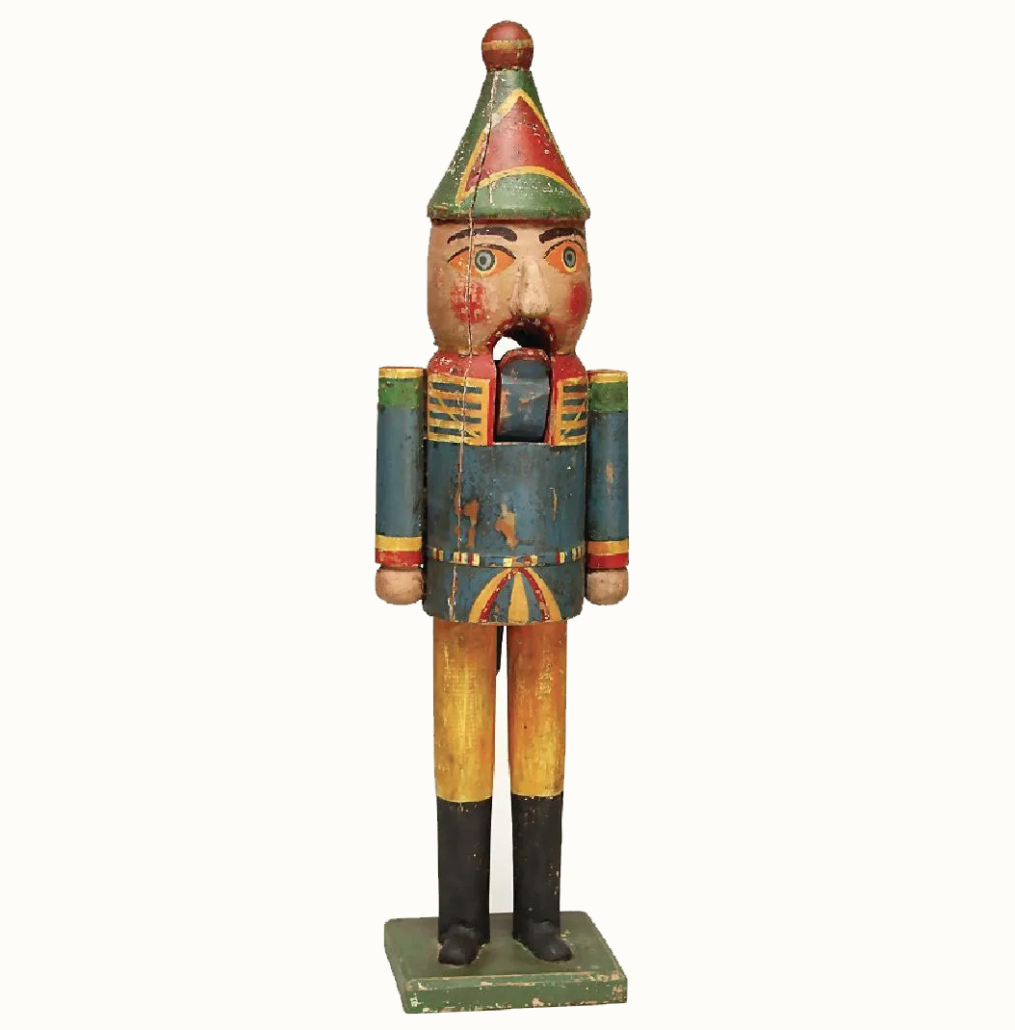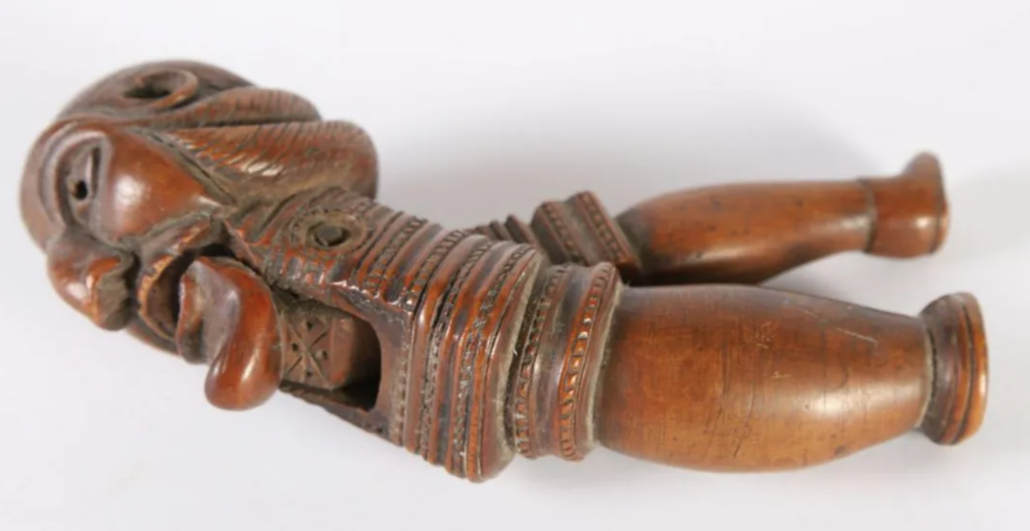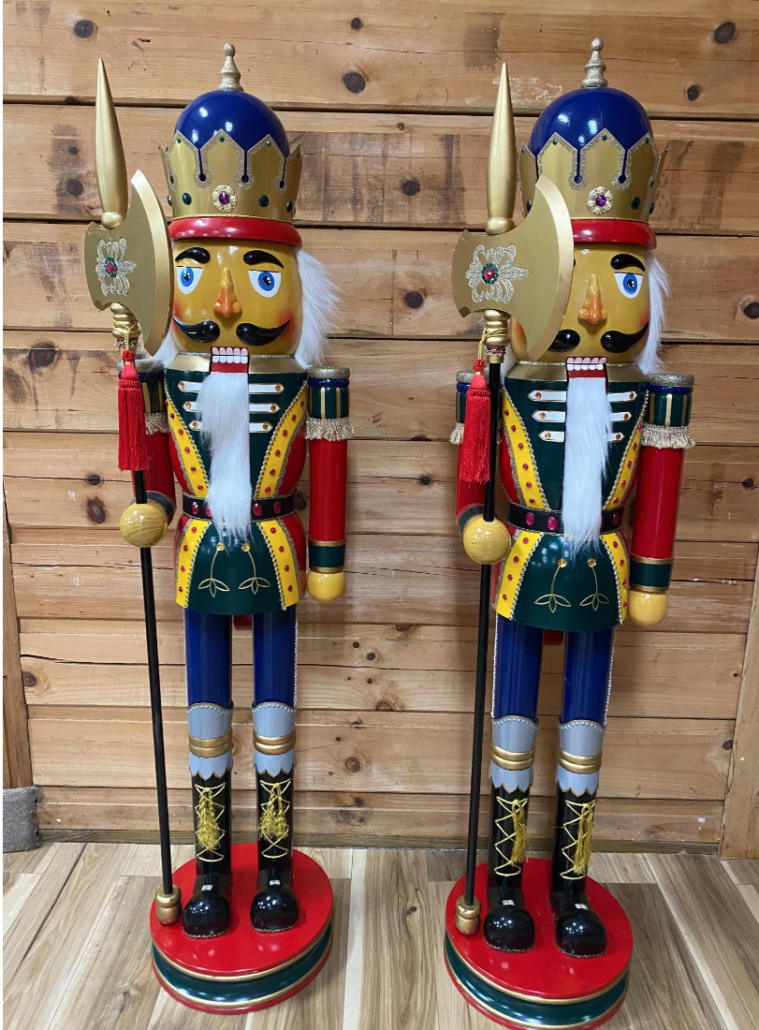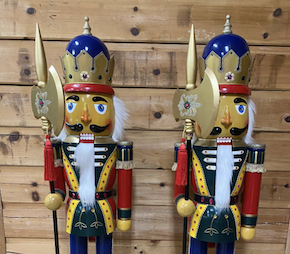
NEW YORK — The nutcracker has long been a traditional Christmas figure, bolstered by priceless PR in the form of a ballet that has become a holiday classic. Based on Ernst Hoffman’s 1816 book, The Nutcracker and the Mouse King, the Nutcracker ballet is a seasonal favorite for audiences of all ages and a boon to ballet companies everywhere. The story features a young girl’s Christmas toy, a nutcracker, which comes to life and fights an evil mouse king.
Nutcrackers are usually painted colorfully and take the shapes of soldiers and other political or authority figures, though primitive and folky animal-form nutcrackers are also seen. While most are wooden, some nutcrackers are fashioned from cast iron, cast aluminum or glass. Old-school wooden toy soldiers share some kinship with nutcrackers, but a true nutcracker has a handle, usually in its back, which opens the figure’s mouth to accept the nut it will crack open.

The Erzgebirge region of Germany has been described as the birthplace of nutcrackers. During the 16th century, many of its citizens worked in the local mines. Life was hard, and many took to carving wood to whittle away the long, cold winter months. Reportedly, the mining families started carving wood figures based on the local leaders who grew wealthy through their underground toil, but exaggerating their features in protest. These figures are said to be the prototypes on which nutcrackers were based. Later, after the mines closed, the figure carvings evolved into a good source of income.
A circa-1890 Erzgebirge nutcracker that retained its fine colors realized $4,383 plus the buyer’s premium in November 2017 at Ladenburger Spielzeugauktion GmbH. The origin story of nutcrackers claims that collectors of the earliest examples were keen to use those styled to resemble members of the royal class — a symbolic way of forcing the nobles to do hard work by cracking hard nuts.
Nutcrackers became a popular subject for carvings across Europe. While most were created as functional objects, some finely carved examples were likely intended to be decorative, and to serve as a status symbol — a surprising reversal of the spirit behind the Erzgebirge protest carvings of old. A circa-1850 French Renaissance carved boxwood nutcracker that sold for $5,029 plus the buyer’s premium in June 2021 at Chiswick Auctions was carved as the head of a bearded man wearing a hat topped by a falcon. The handle has been further outfitted with a whistle.

Colorful nutcrackers are standard today, but a couple of centuries ago, simple wooden carvings were the norm. A 19th-century carved hardwood folk art nutcracker, having the form of a man but embellished with concentric geometric carvings, brought $4,750 plus the buyer’s premium in December 2021 at John McInnis Auctioneers, LLC.

Black Forest carvings of bears are iconic, and they appear on a variety of carved wooden smalls. A Black Forest bear nutcracker realized $400 plus the buyer’s premium in April 2021 at Jasper52. The Black Forest name has stuck, even though it’s a misnomer; the highly realistic carvings were believed to originate from the Black Forest area of Bavaria, Germany, but later research showed that most were instead Swiss-made.
The nutcracker is a fine example of a tool that slowly became more prized for its aesthetics instead of its purpose. While collectors invariably want their nutcrackers to possess the ability to perform the task that gave them their name, most nutcrackers are destined to sit on a shelf as holiday decor. They are virtually never used for fear of damaging them or chipping away at their painted surfaces.

Lifesize nutcrackers that are purely decorative are often displayed in stores as well as in grander homes. A pair of life-size nutcrackers, made of solid wood and hand painted in extensive detail, achieved $1,700 plus the buyer’s premium in May 2021 at Aok Auction Gallery. There is even a nutcracker museum in the United States in Leavenworth, Washington, which was formed in 1995 when a couple donated their huge collection of nutcrackers. The non-profit museum contains more than 7,000 nutcrackers from all over the world. One of visitors’ favorites is Karl, a six-foot tall beer-drinking Bavarian, which was carved by Karl Rappl of Oberammergau, Germany.
Nuts have long since been eclipsed as a seasonal delight, and the nutcracker has been rendered obsolete by companies that sell processed, shelled nutmeats in cans or bags. But as long as ballet companies dance The Nutcracker, the object that inspired it will remain a favorite holiday-themed collectible.



